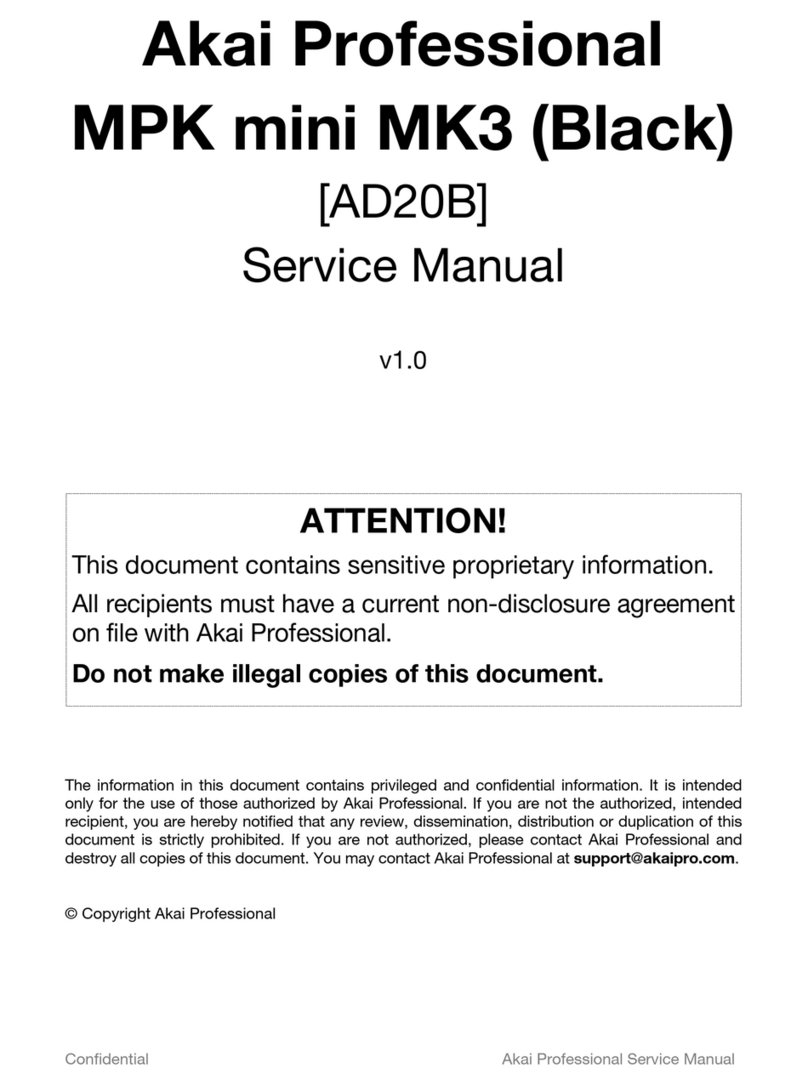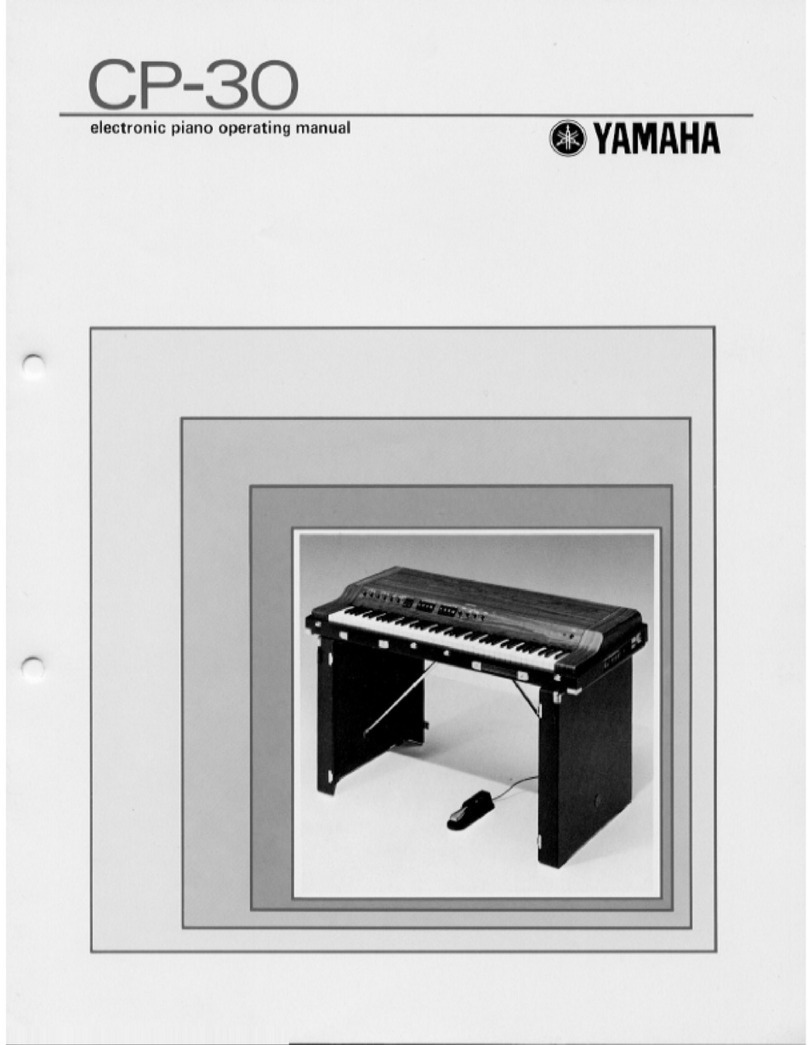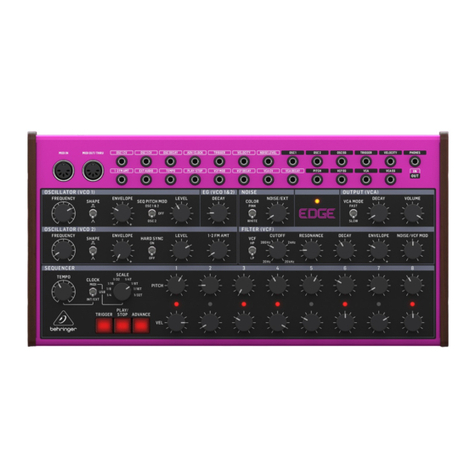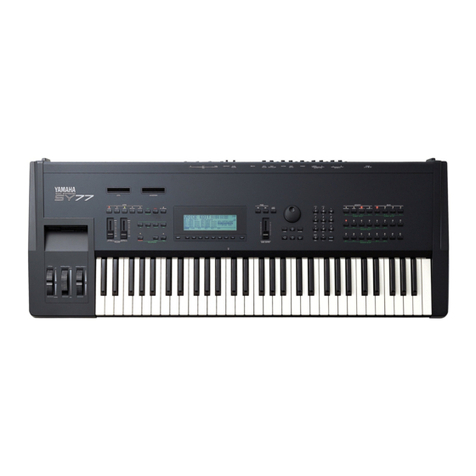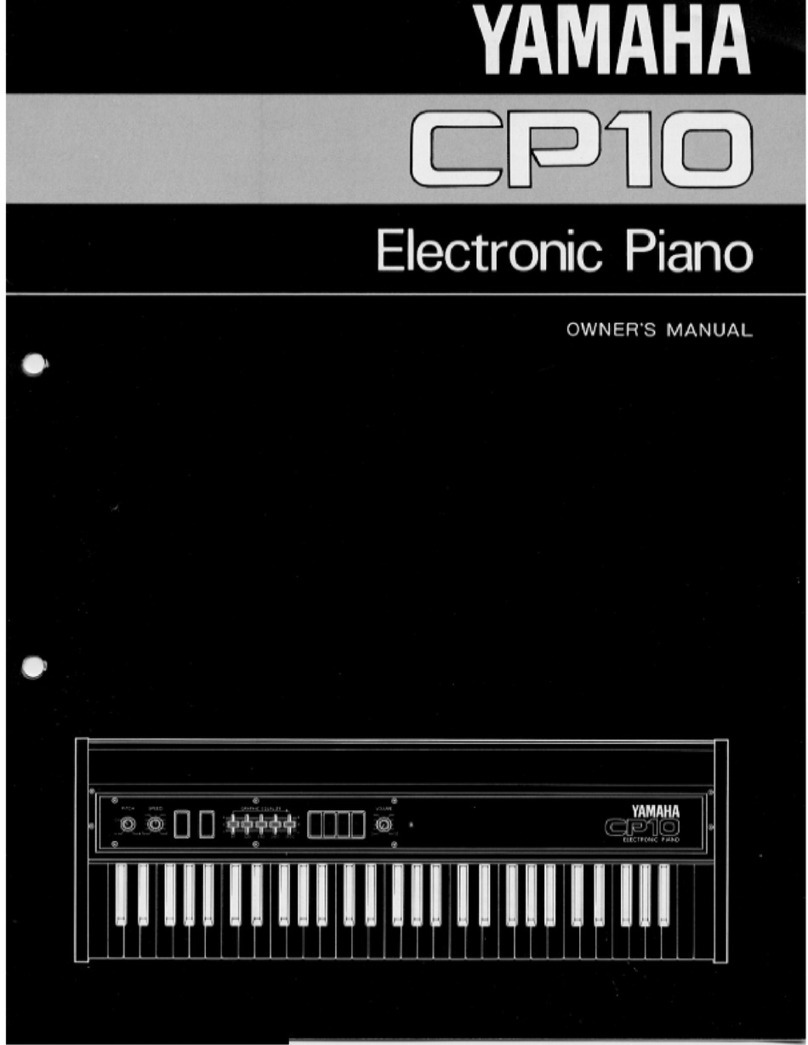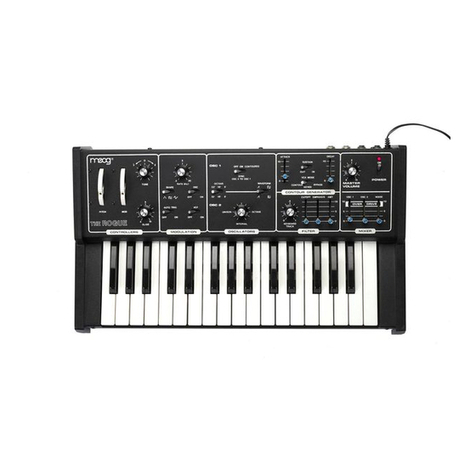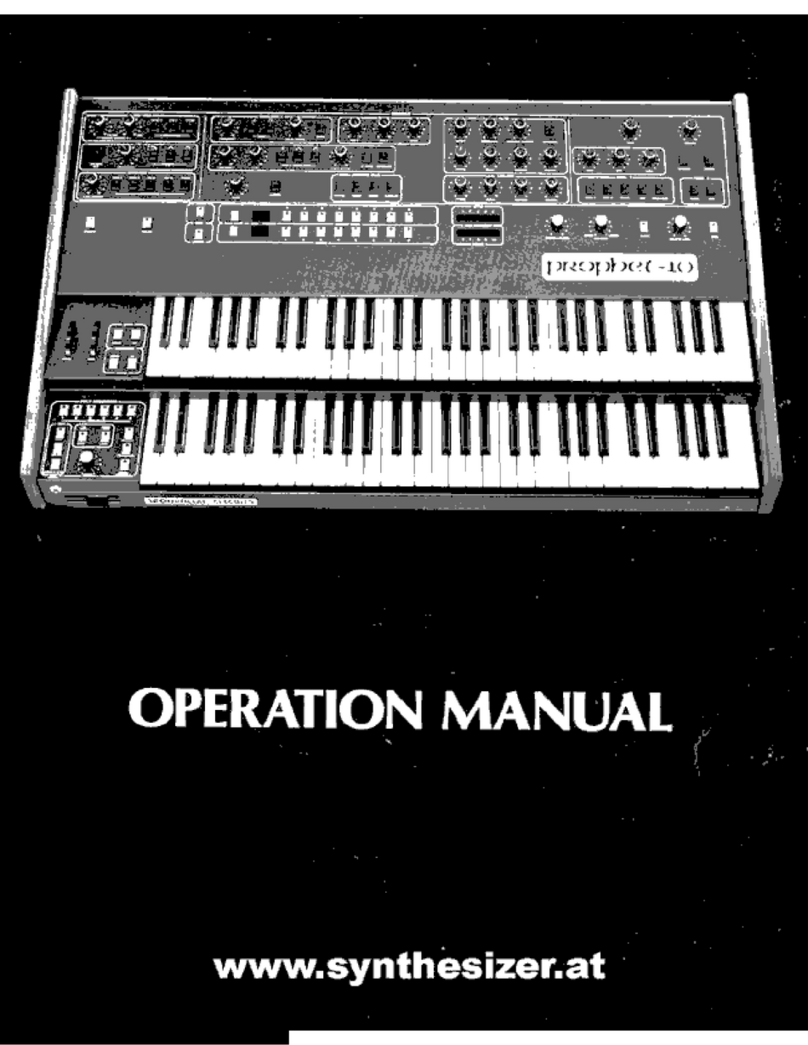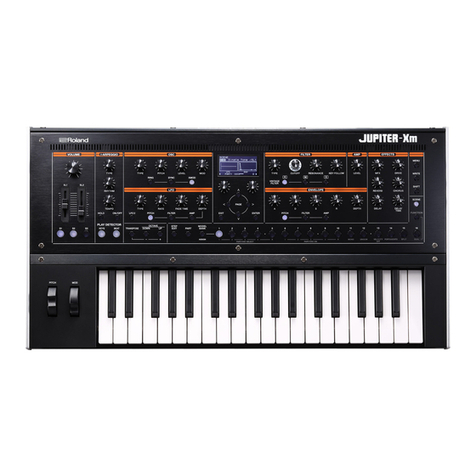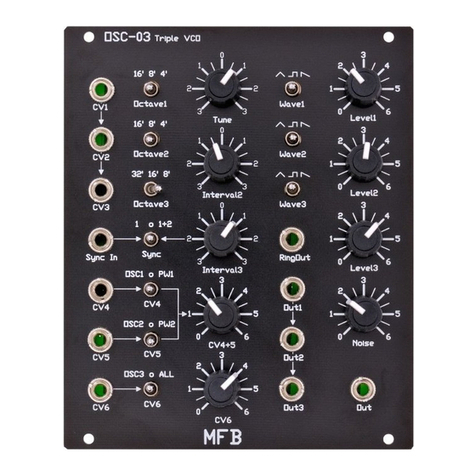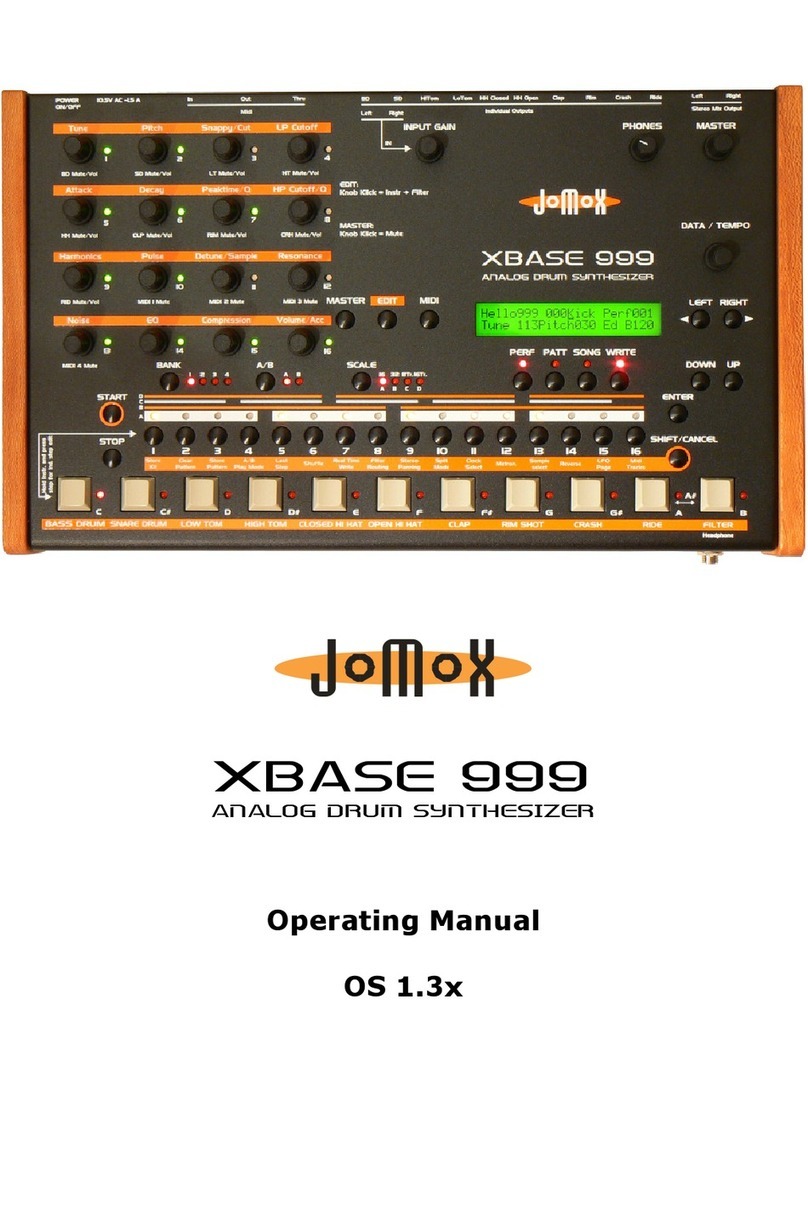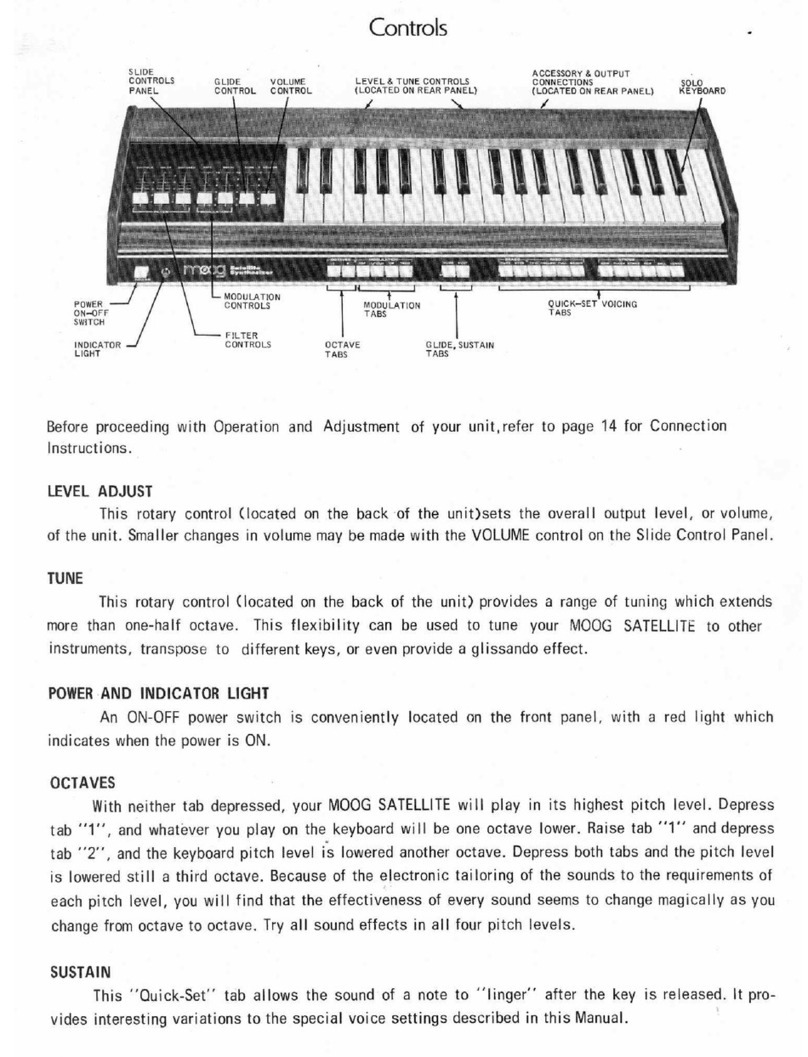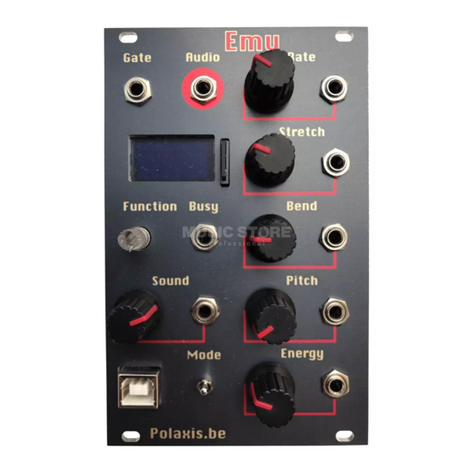Intellijel Atlantis User manual

Atlantis Manual
Atlantis
Dual Oscillator Subtractive Synth Voice
Manual Revision: 2017.09.25

Atlantis Manual
Table of Contents
Table of Contents
Overview
Basic Features
Sound Generators
Filter
Modulators
Mixing and Output
Installation
Before Your Start
Installing Your Module
Getting Started
Quick Start
Make a sound
Audition the waveforms and filter types
Modulate the filter
Add an envelope
Try a little FM
Use a sequencer (or CV keyboard)
Basic Architecture
VCO Overview
MIX Overview
VCF Overview
VCA Overview
ENVELOPE Overview
MOD Overview
Panel Reference
VCO
Controls
Inputs and Outputs
Page 1

Atlantis Manual
MOD
Controls
Inputs and Outputs
MIX
Controls
Inputs and Outputs
VCF
Controls
Inputs and Outputs
ENV
Controls
Inputs and Outputs
VCA
Controls
Inputs and Outputs
Tips, Terms & Techniques
Noise
Sample & Hold
FM
Sub Osc
Signal Flow
Technical Specifications
Page 2

Atlantis Manual
Overview
Atlantis is a complete analog, monophonic synthesizer voice in a single, skiff-friendly
eurorack module. It contains a carefully matched selection of the most desirable subtractive
synthesis components including: two analog oscillators (VCOs); a sub oscillator; a noise
generator; a multimode, self-oscillating resonant filter (VCF) capable of both 2-pole and
4-pole operation; a 4-stage ADSR envelope; a mixer; a voltage controlled amplifier; and an
overdrive circuit.
These components are all pre-connected behind the front panel, enabling Atlantis to
generate sound without patch cables. Furthermore, these normalized routings can be
changed instantly using any of the numerous routing switches sprinkled across the Atlantis’
front panel. This allows for all manner of useful techniques, such as pulse width modulation,
oscillator sync, linear and exponential frequency modulation (FM), low frequency (LFO)
capabilities, and even sample & hold. Musicians can thus create a tremendously wide sonic
palette without ever connecting a patch cable.
For those seeking maximum sonic control, patch points are provided to all these
components — meaning you can reconfigure Atlantis’ architecture in any way you please —
including the ability to route voltages to or from any other eurorack modules in your system.
In this regard, Atlantis becomes not just a single synth voice, but a collection of independent
modules. Need to filter the sound coming from that Intellijel Shapeshifter? Patch it into
Atlantis’ filter. Want some weirdly slewed pitch wobble injected into one of the oscillators?
Patch in an Intellijel Noise Tools.
So what is Atlantis? It’s all of the following:
● A fully featured, fixed-architecture synth that you can happily use without patch cables,
just like many traditional synthesizers.
● A semi-modular synth that enables you to override the various normalled connections,
and reroute the signal flow for experimental sound design.
● An extensible synth that allows you to enhance its sonic palette by patching in external
modules to further shape and define your sound.
● A collection of individual, high-quality synth modules — ready to combine with any and
all other modules in your eurorack system.
Page 3

Atlantis Manual
Basic Features
The following is a quick breakdown of Atlantis’ various synthesizer components, patching
and routing options:
Sound Generators
● VCO (primary): triangle core with Hard Sync, Octave switch, Linear/Exp FM and PWM.
● MOD (second VCO): triangle core with a Hard Sync option, and a Link switch to couple
its pitch to the Primary VCO.
● SUB OSC: additional oscillator with either a square or pulse wave output pitched either
1 or 2 octaves below the primary oscillator.
● NOISE: Noise source with with either Pink and White output.
Filter
● Cascaded 4-Pole multimode (Lowpass; Highpass; Bandpass) OTA filter, switchable
between 2-pole and 4-pole.
● Special LP boost mode.
● Built in soft clipping.
● Allows for inverting ADSR mod source.
Modulators
● ADSR envelope with manual gate, and external level (velocity) control.
● Envelope has looping option, re-trigger, and selectable time range.
● Global modulation bus with four VCO waveforms, noise and S&H options.
Mixing and Output
● 27 jacks for creative and complex patching options — patch points for every synthesis
section.
● Mixer section includes an external source, which is normalled to a sinewave.
● Three position output clipping circuit.
● Output VCA has two stage clipping circuit.
Page 4

Atlantis Manual
Installation
Intellijel Eurorack modules are designed to be used with a Eurorack-compatible case and
power supply.
Before Your Start
Before installing a new module in your case you must ensure your case’s power supply has
sufficient available capacity to power the module:
● Sum up the specified +12V current draw for all modules, including the new one. Do the
same for the -12 V and +5V current draw. The current draw will be specified in the
manufacturer's technical specifications for each module.
● Compare each of the sums to specifications for your case’s power supply.
● Only proceed with installation if none of the values exceeds the power supply’s
specifications. Otherwise you must remove modules to free up capacity or upgrade your
power supply.
You will also need to ensure you have enough free space (hp) as well as free power
headers in your case to fit the new module.
You can use a tool like ModularGrid to assist in your planning. Failure to adequately power
your modules may result in damage to your modules or power supply. If you are unsure,
please contact us before proceeding.
Installing Your Module
When installing or removing a module from your case always turn off the power to the case
and disconnect the power cable. Failure to do so may result in serious injury or equipment
damage.
Ensure the 10-pin connector on the power cable is connected correctly to the module before
proceeding. The red stripe on the cable must line up with the -12V pins on the module’s
power connector. The pins are indicated with the label -12V, a white stripe next to the
connector, the words “red stripe”, or some combination of those indicators.
Page 5

Atlantis Manual
Most modules will come with the cable already connected but it is good to double check the
orientation. Be aware that some modules may have headers that serve other purposes so
ensure the cable is connected to the right one.
The other end of the cable, with a 16-pin connector, connects to the power bus board of
your Eurorack case. Ensure the red stripe on the cable lines up with the -12V pins on the
bus board. On Intellijel power supplies the pins are labelled with the label “-12V” and a thick
white stripe:
Page 6

Atlantis Manual
If you are using another manufacturer’s power supply, check their documentation for
instructions.
Once connected, the cabling between the module and power supply should resemble the
picture below:
Before reconnecting power and turning on your modular system, double check that the
ribbon cable is fully seated on both ends and that all the pins are correctly aligned. If the
pins are misaligned in any direction or the ribbon is backwards you can cause damage to
your module, power supply, or other modules.
After you have confirmed all the connections, you can reconnect the power cable and turn
on your modular system. You should immediately check that all your modules have powered
on and are functioning correctly. If you notice any anomalies, turn your system off right away
and check your cabling again for mistakes.
Page 7

Atlantis Manual
Getting Started
If your previous experiences with learning to use synthesizers involved stepping through
presets, then you’re in for a shock — and a treat! Atlantis has no presets. Like modules and
synths of yore, the parameters on Atlantis are meant to be tweaked, twiddled and performed
in real time. The sound it generates correlates directly with the settings on its front panel —
there is no such thing as patch memory. What you see is what you hear.
While this makes Atlantis infinitely rewarding to sound designers and synthesists, it can be
slightly daunting to new users, since at least a modicum of basic knowledge is required to
coerce it into making the sounds you hear in your head.
In this Getting
Started
section, you’ll jump right into making sound, while simultaneously
getting comfortable with Atlantis’ front panel and layout. From there you’ll learn a bit about
Atlantis’ architecture and some fundamentals of subtractive analog synthesis before delving
into the Reference
section, where you’ll find a more detailed discussion of Atlantis’ many
features and capabilities.
Quick Start
Make a sound
1. Connect the jack labelled OUT to your system’s audio output.
2. Set all sliders to their minimum (bottom) positions.
3. In the MIX section, set the leftmost slider (PULSE) to its maximum.
4. In the VCO section, make sure SYNC is off (switch position at the bottom).
5. In the VCF section, set the FREQ slider to its maximum.
6. In the VCA section, set the ENV/GATE switch to the “GATE” position.
7. Push the GATE button (small red button beneath the ENV/GATE switch). You should
hear a sound that sustains for as long as you hold the button.
8. In the VCO section, rotate the OCTAVE and FINE knobs to tune the oscillator as you
like.
Audition the waveforms and filter types
1. In the MIX section, raise and lower all the sliders and make note of how the sound
changes as different waveforms are mixed together in varying amounts.
Page 8

Atlantis Manual
2. In the VCF section, set the top switch to “LP,” the POLES switch to “2,” and turn on LP
BOOST. Raise and lower the FREQ slider, and notice how the filter is removing high
frequency content.
3. In the VCF section, set the RES slider to its midpoint, then raise and lower the FREQ
slider. Notice how the filter’s cutoff frequency is now more pronounced.
4. While still in the VCF section, experiment with different settings of the LP/BP/HP switch
and the 2-POLE/4-POLE switch. Notice how these change what frequencies are being
filtered and how “steep” the filter sounds.
Modulate the filter
1. In the MIX section, set the leftmost slider (PULSE) to its maximum, and set all the other
MIX section sliders to their minimum.
2. In the VCF section, set the filter type to “LP,” the POLES switch to “4” and set all the
sliders to the bottom, except FREQ, which you should set at the midpoint.
3. In the MOD section, set the VCO/LFO switch to “LFO;” set the RATE fader to the
midway point, and use the TYPE knob to select a triangle wave.
4. Back in the VCF section, raise the MOD slider to its midpoint. Notice that the filter’s
cutoff frequency is now being modulated by the MOD oscillator.
5. Back in the MOD section, raise and lower the RATE slider to change the rate at which
the LFO modulates the filter’s cutoff frequency. When finished, go to the VCF section
and reduce the MOD slider back to minimum.
Add an envelope
1. In the ENVELOPE section, set the CYCLE switch to its OFF position, and the x1/x10
switch to the “x1” position. Set the A (attack) and S (sustain) sliders to the bottom, and
the D (decay) and R (rate) sliders to the top.
2. In the VCA section, set the ENV/GATE switch to “ENV.”
3. Push the red button beneath the ENV/GATE switch and notice how the sound no longer
sustains indefinitely, but decays over time.
4. In the VCF section, set the filter type to “LP,” the POLES switch to “2” and set all the
sliders to the bottom, except FREQ, which should be about one-third of the way up.
5. Set the ENV POLARITY switch to the right (normal polarity) and press the red button in
the VCA section. You are probably hearing a fairly dark, quiet sound. If you don’t hear
anything, try increasing the FREQ slider until you just barely hear some signal passing
through the filter.
Page 9

Atlantis Manual
6. In the VCF section, slowly increase the ENV slider as you continue to press the little red
trigger button. Notice that the envelope shape is now being applied to the filter —
making it sound brighter at the beginning, then duller as the sound decays.
Try a little FM
1. In the MOD section, turn on LINK mode (switch position is up), set the VCO/LFO switch
to “VCO” and set the RATE slider to its midpoint.
2. In the VCO section, set the EXP/LIN switch to the “LIN” position, and slowly raise the
MOD slider to its midpoint while continuing to press the little red GATE button.
Experiment with different MOD levels in the VCO section and with different RATE levels
in the MOD section and notice the range of tonal variance that’s possible.
Use a sequencer (or CV keyboard)
1. Connect the gate output of your sequencer or CV keyboard to the GATE input at the top
of Atlantis.
2. Connect the pitch output of your sequencer or CV keyboard to leftmost 1V/OCT input at
the top of Atlantis.
3. Run the sequencer (or play the keyboard), and you should hear Atlantis playing the
melody.
4. In the VCA section, tune Atlantis by rotating the OCTAVE knob to set the desired pitch
range, and rotate the FINE knob to fine tune the pitch.
Now that you’ve explored some very rudimentary sounds, it’s time to dig into some analog
synthesis basics and learn a bit about Atlantis’ basic voice architecture.
Page 10

Atlantis Manual
Basic Architecture
Atlantis is comprised of several synthesis modules — wired in a normalled configuration,
with patch points for overriding the default connections (or for integrating with other modular
gear). The basic architecture looks as follows:
Using the same color-coding, the following illustration shows the location of these modules
(and their corresponding patch points) on Atlantis’ front panel:
An introduction to each of these modules appears in the sections below. See Panel Reference
for a detailed discussion of each module, knob, switch, slider, and jack.
Page 11

Atlantis Manual
VCO Overview
The VCO generates several different types of waveforms, including pulse, triangle and sine.
All waveforms are simultaneously accessible, and you can mix them together in varying
amounts using Atlantis’ MIX section (described below). The pitch of the VCO is set using its
OCTAVE and FINE knobs. The VCO will track an input source (such as a keyboard or
sequencer) plugged into Atlantis’ 1V/OCT jack, allowing for melodies.
Additional controls such as pulse width modulation (PWM); frequency modulation (FM); and
oscillator SYNC all alter the harmonic character allowing you to create richer, more
harmonically complex waveforms.
MIX Overview
The various waveshapes generated by the VCO are fed into the MIX section, where you can
blend them together in varying amounts. Different waveforms have different sonic
characteristics, so combining them in different ways results in a wide variety of timbres. For
example, sine waves are pure and void of harmonic content; square waves contain odd
numbered harmonics, making them sound richer and slightly “hollow;” sawtooth waves are
bright and brassy since they contain both even and odd harmonics.
This section adds two additional audio sources, which you can also blend into to the mix:
NOISE and a SUB OSCILLATOR. There is an additional input for bringing external audio
into the mix (which, when done, replaces the sine wave output from the VCO).
VCF Overview
The output of the MIX section feeds the Voltage Controlled Filter (VCF), which subtracts
certain frequencies and harmonics. This type of synthesis, in which you generate a richly
harmonic waveform and then remove certain frequencies with a filter, is called “subtractive
synthesis.”
Atlantis uses a 4-stage cascaded OTA filter similar to the type Roland used in the SH-101,
Jupiter-8, Juno-60 and other classic synths. In general, OTA filters produce less internal
distortion than Moog-style ladder filters, and are somewhat “smoother” sounding (though
with Atlantis’ built-in boost and drive options, there’s plenty of opportunity to rough up that
sound). In general, you can select between one of three types of filters: Lowpass (LP);
Bandpass (BP); and Highpass (HP). LP filters allow low frequencies to pass through the
filter, meaning that higher frequencies are removed, which results is a deeper sound; HP
filters allow high frequencies to pass through the filter, meaning that low frequencies are
removed. BP filters allow only a certain band of frequencies to pass through the filter,
removing frequencies that are both above and below the desired frequency.
Page 12

Atlantis Manual
The FREQ slider sets the frequency at which the filter activates. For example, if you
selected the LP filter and set the slider at maximum frequency, you would hear no effect.
That’s because you’ve told Atlantis that you want to pass all frequencies below this value —
and since you set the value is at the top of the audio range, you hear everything. By
gradually reducing the FREQ slider (in LP mode), you remove more and more high
frequency content until, at the bottom, you remove all audio content.
The filter can operate in either 2-pole or 4-pole mode. The number of poles a filter has
determines how aggressively the filtered frequencies are attenuated. A 2-pole filter reduces
frequencies by 12 dB per octave. So if you used the FREQ slider to cut all frequencies
above middle C (C3), then you would still hear frequencies corresponding to C4 — but they
would be attenuated by 12 dB. A 4-pole filter reduces frequencies by 24 dB per octave. So
in this case, if you set the filter to cut all frequencies above C3, then the frequencies
corresponding to C4 would be 24 dB quieter.
In addition to setting the FREQ at which you want signals to attenuate, you may also set a
RES (resonance) level. High resonance values accentuate the cutoff frequency, and the
higher the resonance, the more the filter seems to ring (or resonate) at that frequency. When
RES is set to maximum, Atlantis’ filter will self-oscillate — which means it resonates so
much that it becomes a sine wave oscillator whose pitch corresponds to the FREQ setting,
and which tracks an external keyboard or sequencer plugged into the filter’s 1V/Oct jack.
Page 13

Atlantis Manual
VCA Overview
After exiting the filter, audio passes through the VCA (voltage controlled amplifier) where its
volume level is shaped by the ENVELOPE (discussed below) when the ENV/GATE switch is
set to ENV. When that switch is set to GATE, then the VCA operates more like an organ —
switching the sound on to full volume when a signal appears at the GATE jack atop the
module, or when you press the little red button beneath the GATE switch. In GATE mode
the sound stays at maximum volume until the Gate signal is removed (or the button is
released). Additionally, there is a 3-position DRIVE circuit built into the VCA, which can
saturate Atlantis’ output, giving it a grittier, more aggressive sound.
ENVELOPE Overview
Sounds are rarely static. For example, a plucked string sound is brighter and louder at the
beginning, then grows duller and quieter over time. A bowed string takes longer to reach its
maximum volume (and brightness) as the bow digs deeper into the string.
To synthesize these time-based changes, Atlantis contains an ENVELOPE, which lets you
set the sound’s Attack time, Decay time, Sustain level and Release time. Using the ADSR
sliders, you can create many different contours. For example, you would create a short,
snappy sound by using a fast A, short D, no S, and short R. Or you can create a more
languid contour that slowly fades in (slow A), stays at maximum volume (full S), then fades
away slowly when you stop playing the note (long R).
Page 14

Atlantis Manual
In order to maximize the envelope’s usability, Atlantis gives you two ADSR scalings: x1 and
x10. Use the x1 setting when you need to create shorter, snappier envelopes with great
precision. Use the x10 setting to create longer, more lethargic envelopes.
Without needing to employ patch cables, Atlantis lets you route the envelope to numerous
destinations, including the VCA (volume contour of a note); VCO (pulse width contour of a
note); and VCF (timbral contour of a note). Additionally, Atlantis gives you the option of
inverting the envelope when sending it to the VCF. You can, of course, use Atlantis’ patch
points to route the envelope to any number of other internal (or external) destinations.
MOD Overview
The MOD section is a fully featured second VCO, and you can access its various
waveshapes using patch cables. In Atlantis’ default configuration, this oscillator serves as a
modulator — which means it’s used to dynamically alter (“modulate”) one or more other
parameters. The MOD oscillator operates at either audio rates or as a low frequency
oscillator (LFO), depending on the position of the VCO/LFO switch. Numerous modulation
shapes are available, including Sample & Hold (S&H) and noise.
Atlantis’ normalized architecture supports direct modulation of several parameters, including:
the frequency of the main VCO (FM); the pulse width (PWM) of both the main VCO and the
SUB OSC; and the VCF FREQ. More modulation options become available when the patch
points are used.
Page 15

Atlantis Manual
Panel Reference
This section discusses, section-by-section, every element on Atlantis’ front panel.
VCO
Controls
1. OCTAVE Select Knob
This 6-position knob sets the coarse tuning of the oscillator. Each position shifts the
tuning by one octave. Fine adjustment can be made using the FINE knob.
2. FINE Tune Knob
This knob finely adjusts the tuning frequency. The range is approximately +/- 6
semitones from the centre position.
Page 16

Atlantis Manual
3. PULSE WIDTH Slider
Sets the pulse width of the oscillator’s PULSE output. Different pulse widths produce
different timbres. With the slider at the bottom, the output produces a narrow 10%
duty cycle. With the slider at the top, the resulting pulse has a 90% duty cycle. A
square wave is produced with the slider exactly half-way up.
4. PWM Amount Slider
You can modulate the PULSE WIDTH over time using the PWM (pulse width
modulation) slider. This gives the waveform a sense of “movement.” Use the
corresponding PWM SOURCE switch to select a modulation source.
5. PWM SOURCE Switch
Selects a Pulse Width Modulation source. There are three options:
MOD: When switched to the top position, the output of Atlantis’ MOD oscillator varies
the pulse width over time. The input from the MOD oscillator is summed with the
PULSE WIDTH slider and, together, they set the width of the PULSE output.
EXT: When switched to the middle position, Atlantis uses a signal patched into the
PWM Input to vary the pulse width. The PWM input is summed with the PULSE
WIDTH slider and, together, they set the width of the PULSE output.
ENV: When switched to the bottom position, Atlantis uses the ENVELOPE to vary
the pulse width over time. The input from the ENVELOPE is summed with the
PULSE WIDTH slider and, together, they set the width of the PULSE output.
6. SYNC Switch
Switches the primary VCO into HARD SYNC mode. This forces the frequency of the
VCO to become slaved to a second, master oscillator. Every time the master
oscillator restarts its wave cycle, it forces the slaved oscillator (the VCO) to restart its
cycle. Richly harmonic waveforms result from setting the master and slave oscillators
to different frequencies.
By default, Atlantis uses a square wave from the MOD oscillator as the master
oscillator. So, when VCO is set to SYNC mode, the VCO’s pitch is actually controlled
by the MOD oscillator. If desired, you can patch a different oscillator into the VCO
SYNC input jack and synchronize to that instead.
To achieve classic analog sync sounds, patch your keyboard into the MOD’s
1V/OCT jack and tune it using the MOD oscillator’s RATE and FINE control. To get
that classic “dive bombing” sync sound, patch the ENVELOPE output into the VCO’s
1V/OCT jack and adjust the envelope to taste. TIP:
For
a
more
subdued
“dive
bomb”,
route
the
envelope
through
an
external
attenuator,
such
as
an
Intellijel
Triatt
or
Quadratt
1U
before
sending
it
to
the
VCO’s
1V/OCT
input
jack.
Page 17

Atlantis Manual
7. MOD Amount Slider
This sets the depth of the FM effect. When the slider is at the bottom, no frequency
modulation occurs. Maximum modulation occurs at the top.
8. EXP/LIN Switch
Switches between two types of frequency modulation: EXP[ONENTIAL] and
LIN[EAR]. Its effect is most clearly heard (and understood) when the VCO/LFO
switch in Atlantis’ MOD oscillator is set to VCO.
See the FM synthesis discussion to learn about these two types of frequency
modulations, including their sonic characteristics, fundamental differences and sound
design uses.
Inputs and Outputs
A. PULSE Wave Output
Pulse wave output from the VCO. The width of the pulse is controlled by a
combination of the PULSE WIDTH knob and PWM input. Although Atlantis routes the
VCO pulse wave to the MIX by default, this jack lets you tap into that output directly
— sending it to alternate destinations either within Atlantis or within a larger eurorack
system.
B. SAW Wave Output
Sawtooth wave output from the VCO. Although Atlantis routes the VCO SAW wave
to the MIX by default, this jack lets you tap into that output directly — sending it to
alternate destinations either within Atlantis or within a larger eurorack system.
C. SINE Wave Output
Sine wave output from the VCO. Atlantis routes the VCO SINE wave to the mixer’s
EXTERNAL INPUT by default. If you choose to send external audio into the Mixer
instead of the sine wave, this jack enables you to still access that SINE wave —
sending it to alternate destinations either within Atlantis or within a larger eurorack
system.
D. SUB Osc Output
SUB Osc output from the VCO. Although Atlantis routes the Sub Osc to the MIX by
default, this jack lets you tap into that output directly — sending it to alternate
destinations either within Atlantis or within a larger eurorack system.
E. 1V/OCT Input
This input controls the pitch of the VCO, and is typically fed from the Pitch CV output
of a standard 1V/Oct keyboard or sequencer.
Page 18

Atlantis Manual
F. PWM Input
This input has a range of +/- 5 V, and is used to modulate the pulse width when the
PWM SOURCE switch is set to EXT. The input is summed with the PULSE WIDTH
slider and, together, they set the width of the PULSE output. Note that external PWM
allows for pulse widths that extend down to 0% and up to 100%. At these two
extremes, the PULSE output is silent, further increasing the timbral complexity
available.
G. MOD Input
Linear or exponential frequency modulation input. The behaviour is set by the
EXP/LIN switch. Patching into this input disables the the input from the MOD
oscillator.
H. SYNC Input
With the SYNC switch turned ON, the VCO slaves to the waveform received at this
input. With no signal connected, the VCO slaves to the MOD oscillator’s square
wave output.
Page 19
Other manuals for Atlantis
1
Table of contents
Other Intellijel Synthesizer manuals

Intellijel
Intellijel mScale User manual

Intellijel
Intellijel Cascadia User manual
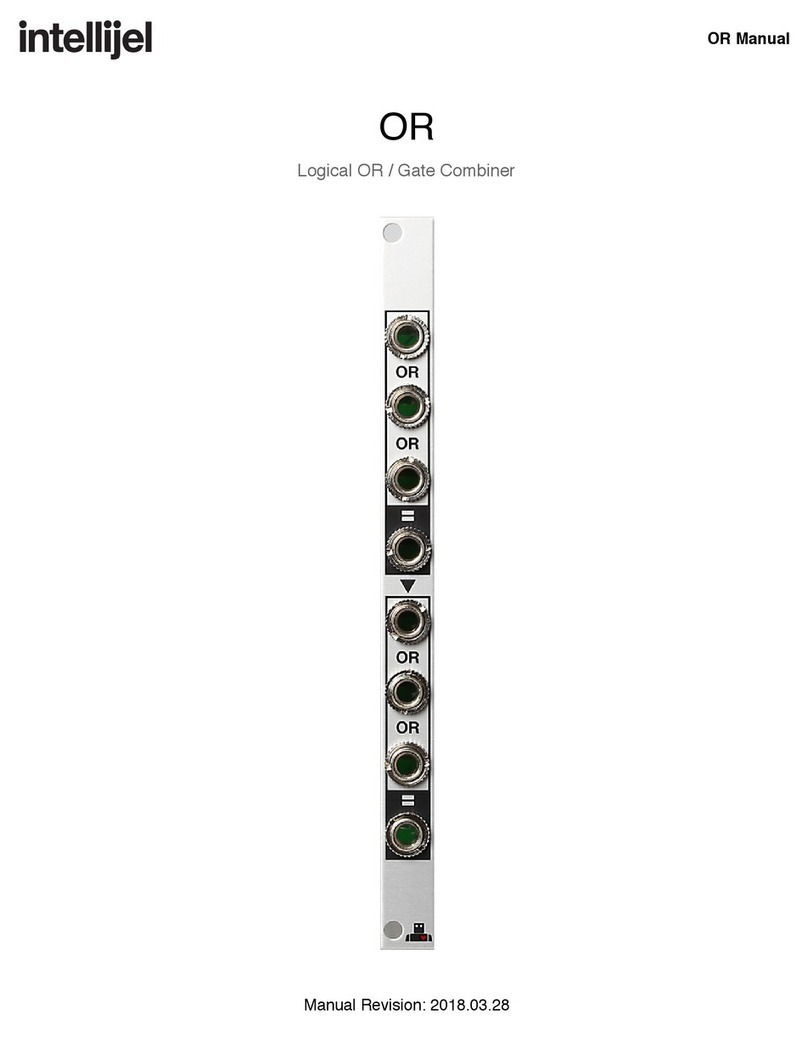
Intellijel
Intellijel OR User manual
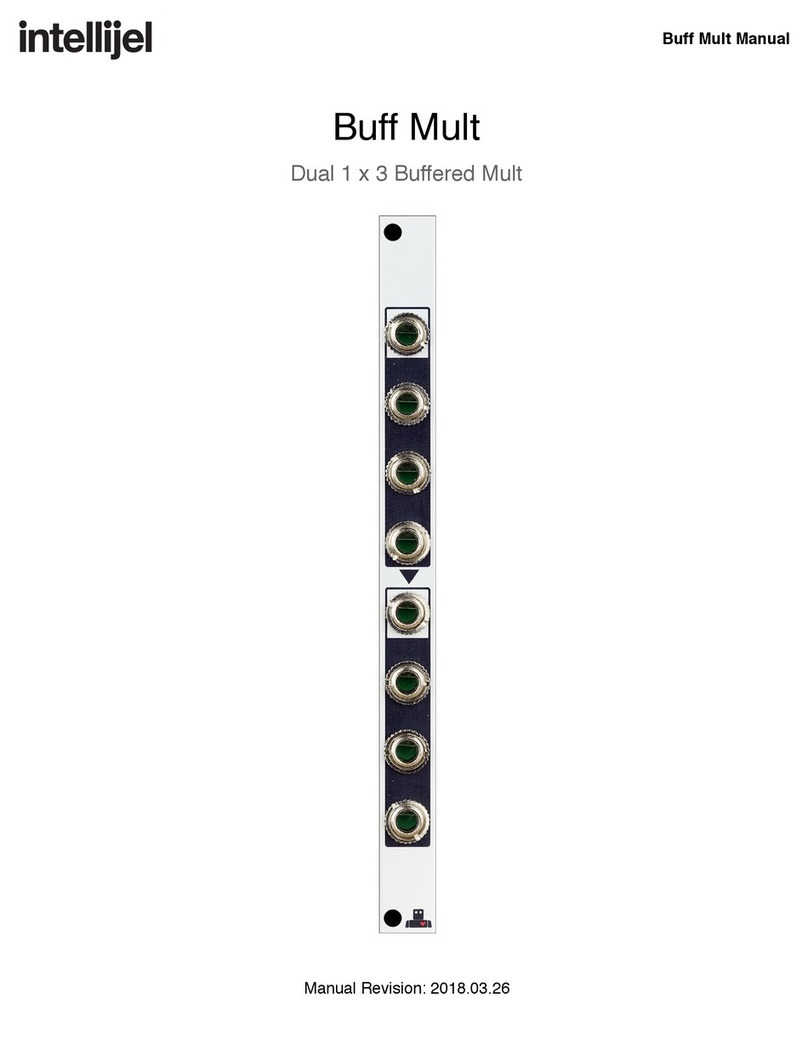
Intellijel
Intellijel Buff Mult User manual
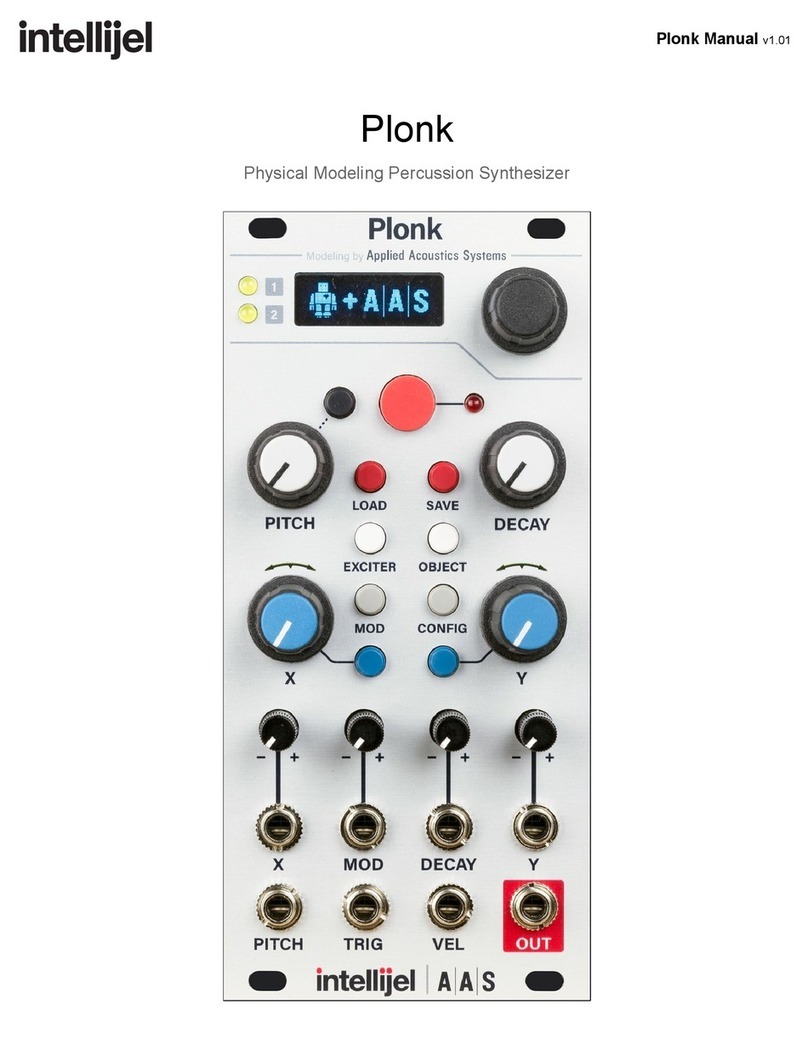
Intellijel
Intellijel Plonk User manual

Intellijel
Intellijel Stereo Line In 1U User manual
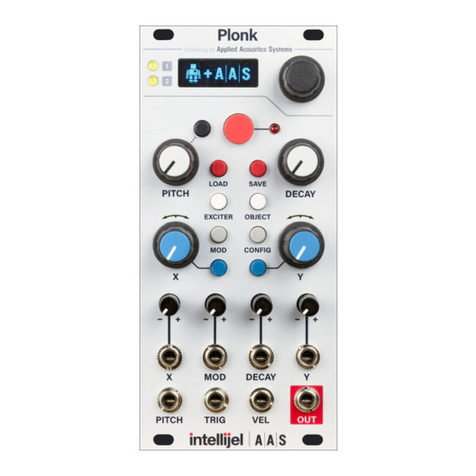
Intellijel
Intellijel Plonk User manual
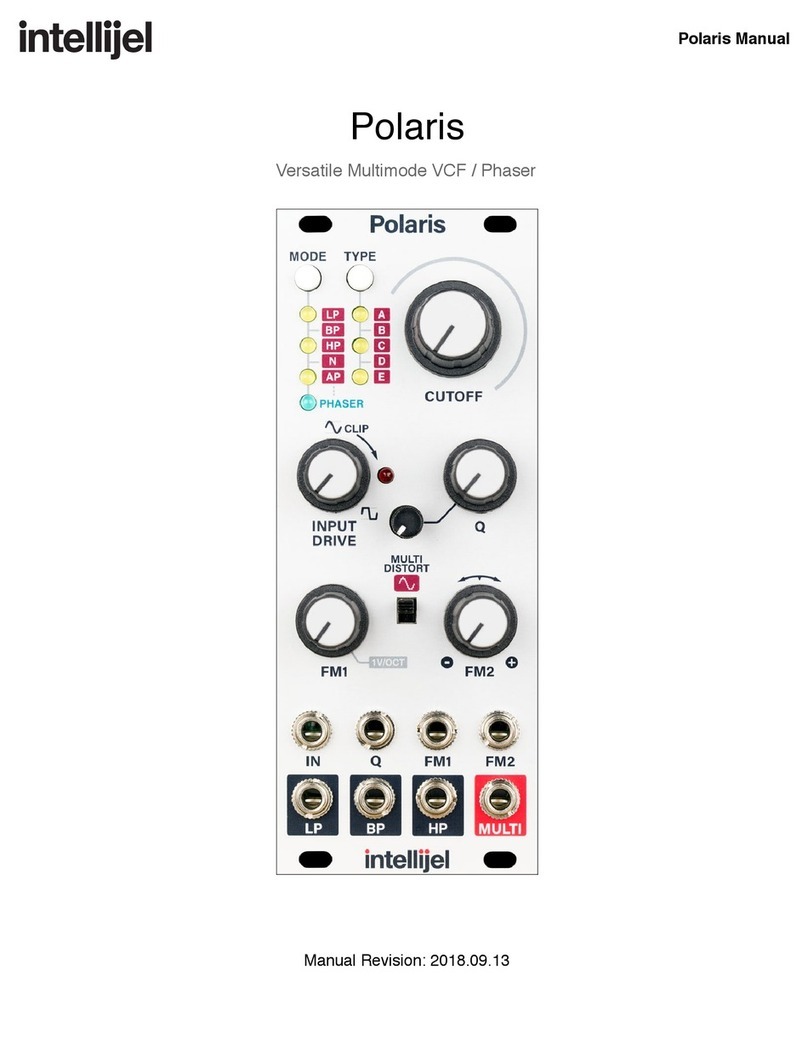
Intellijel
Intellijel Polaris User manual
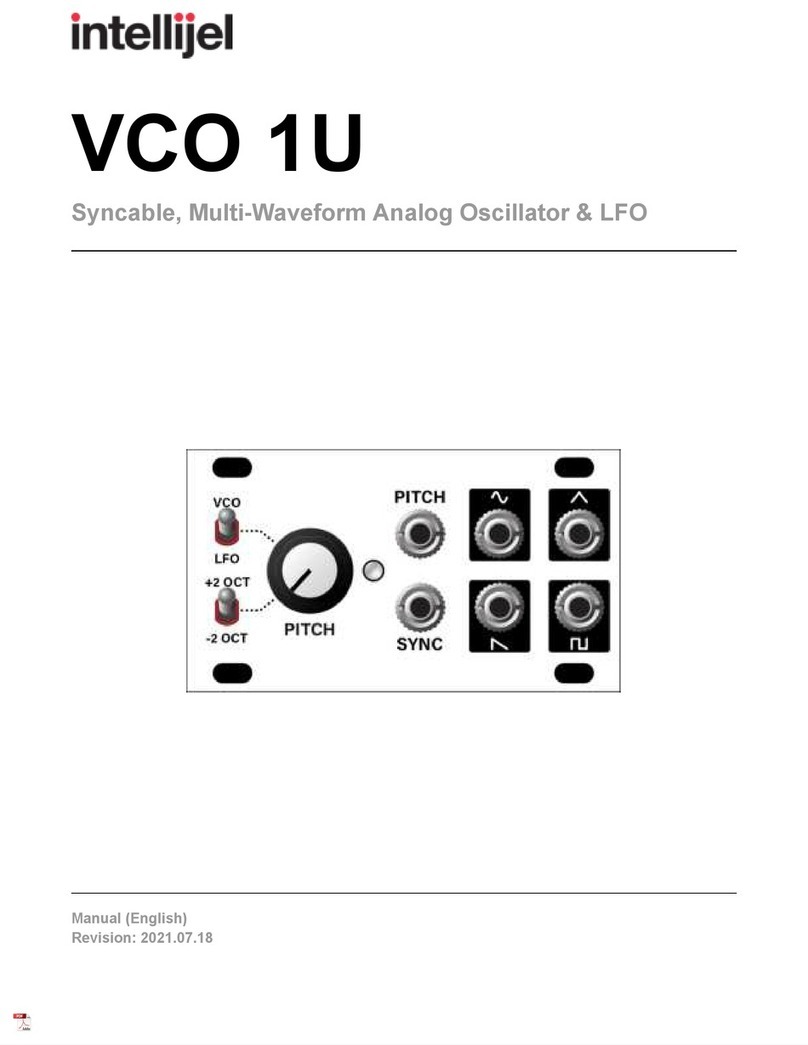
Intellijel
Intellijel VCO 1U User manual
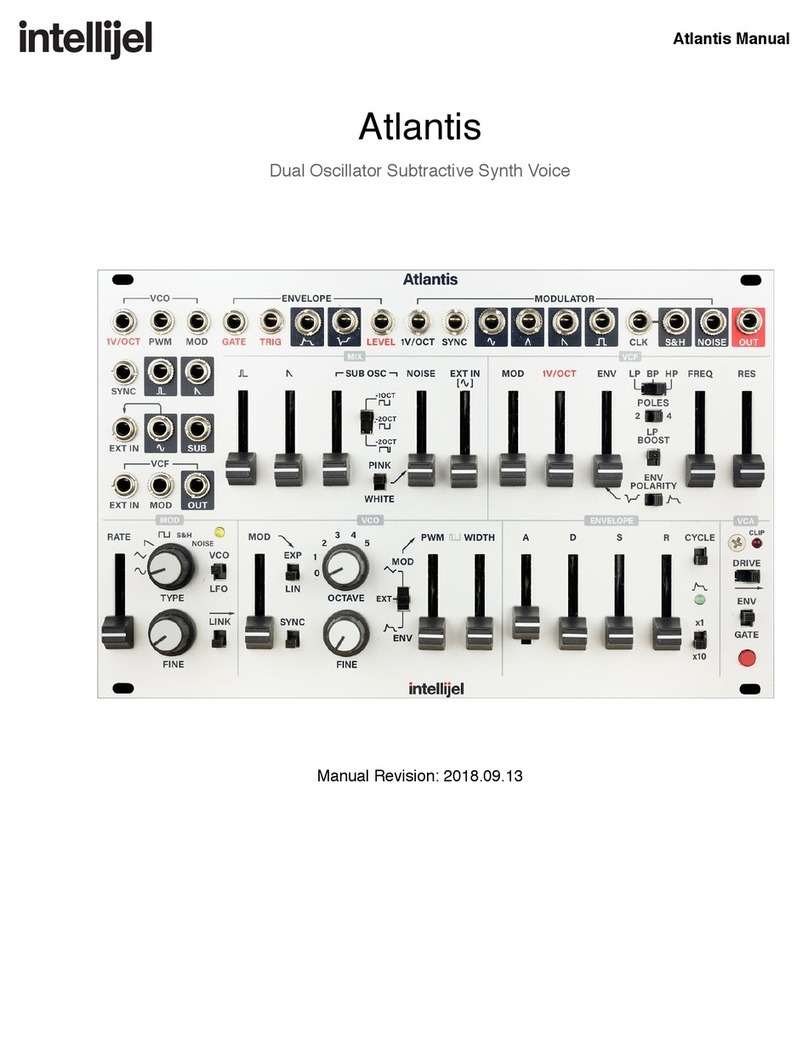
Intellijel
Intellijel Atlantis User manual
